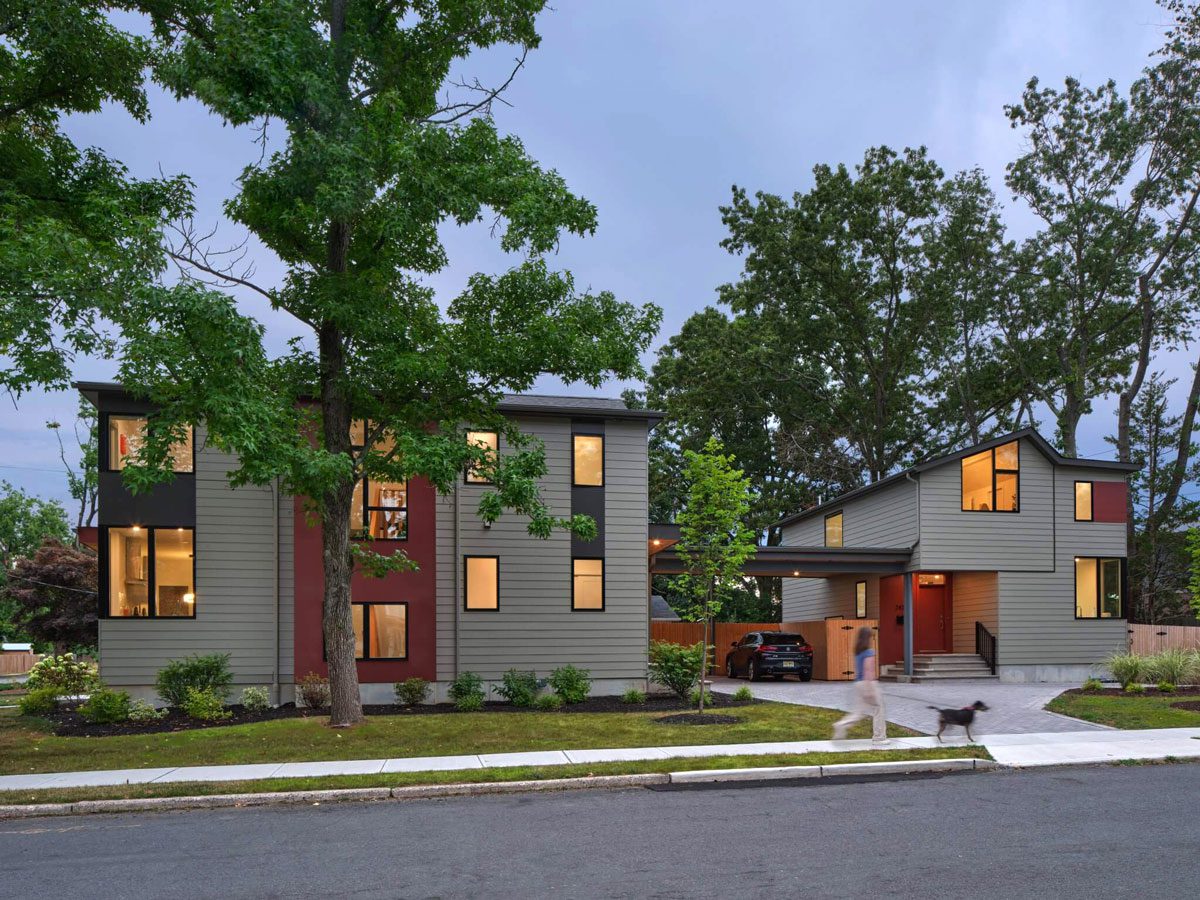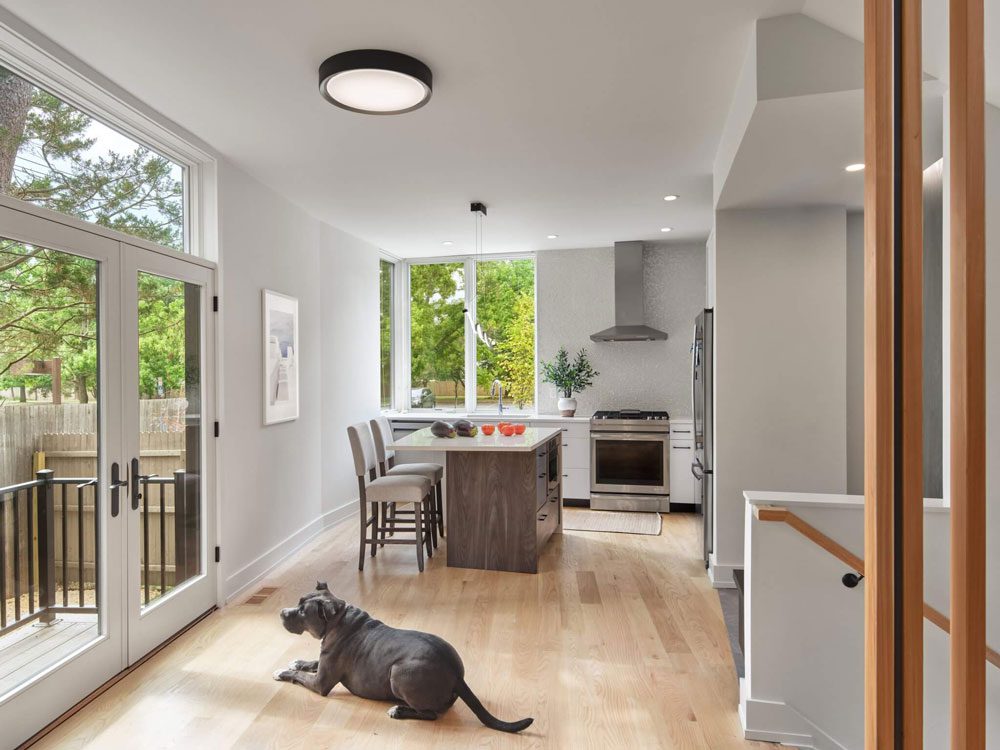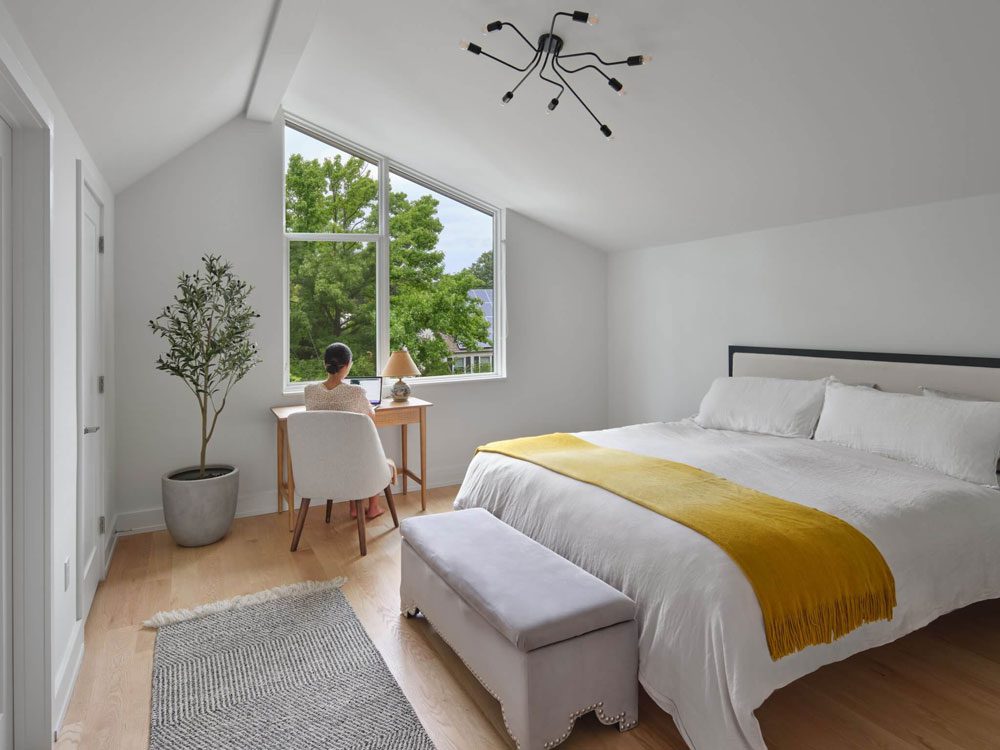Are Tiny Houses a Solution to the Housing Crisis in NJ?
Writer Thomas Neira, New Jersey Monthly, Jacqueline Mroz, New Jersey Monthly | Photographer Todd Mason/Halkin Mason Photography | Architect Marina RubinaThe accessory-dwelling-unit boom could mean more affordable housing for New Jersey residents.

This Princeton ADU (the structure seen at right), designed by architect Marina Rubina, is roughly 1,000 square feet. Rubina looks to make the most out of any size home based on her “livable, lovable density” model of architecture.
After the pandemic devastated nursing homes around the country, many elderly people wanted to find a different way of living out their golden years — one that would keep them in their homes and communities.
That’s just one reason why Accessory Dwelling Units (ADUs) — small, single housing units located on the properties of larger, single-family homes — have become popular in New Jersey.
“Many [elderly] people want to age in place. They want to keep the same doctors and houses of worship and neighborhoods. Disruptions can be difficult for older people to adjust to,” says Ann Lippel, a Montclair Gateway Aging in Place board member who has been advocating for ADUs in the Essex County town since 2015.
After more than a decade of discussion, Montclair finally passed an ADU ordinance in February, making it legal to have one of these tiny homes. Montclair joins a short list of other municipalities around the state that have passed ADU ordinances, including Princeton, Maplewood, East Orange and Bradley Beach. Restrictions regarding things such as square footage and number of stories an ADU can have vary by town.
Harold Simon, an affordable-housing advocate and expert who lives in Montclair, recalls trying to get the same ordinance passed in town back in 2011 — to no avail. “Montclair, like every other community in New Jersey, has a need for more housing, but it’s an old community,” says Simon. “There are real limits to how much more housing you could put into a place like Montclair. So you could either build apartment buildings or you could add an ADU.”
ADUs aren’t just for the elderly. The units can be an alternative for any adult looking to rent. And because ADUs are built on already-owned properties, more homes can be added to the market without the need for more space. Many say ADUs are a potential solution to the housing crisis.
Click here to continue reading this story on New Jersey Monthly.


